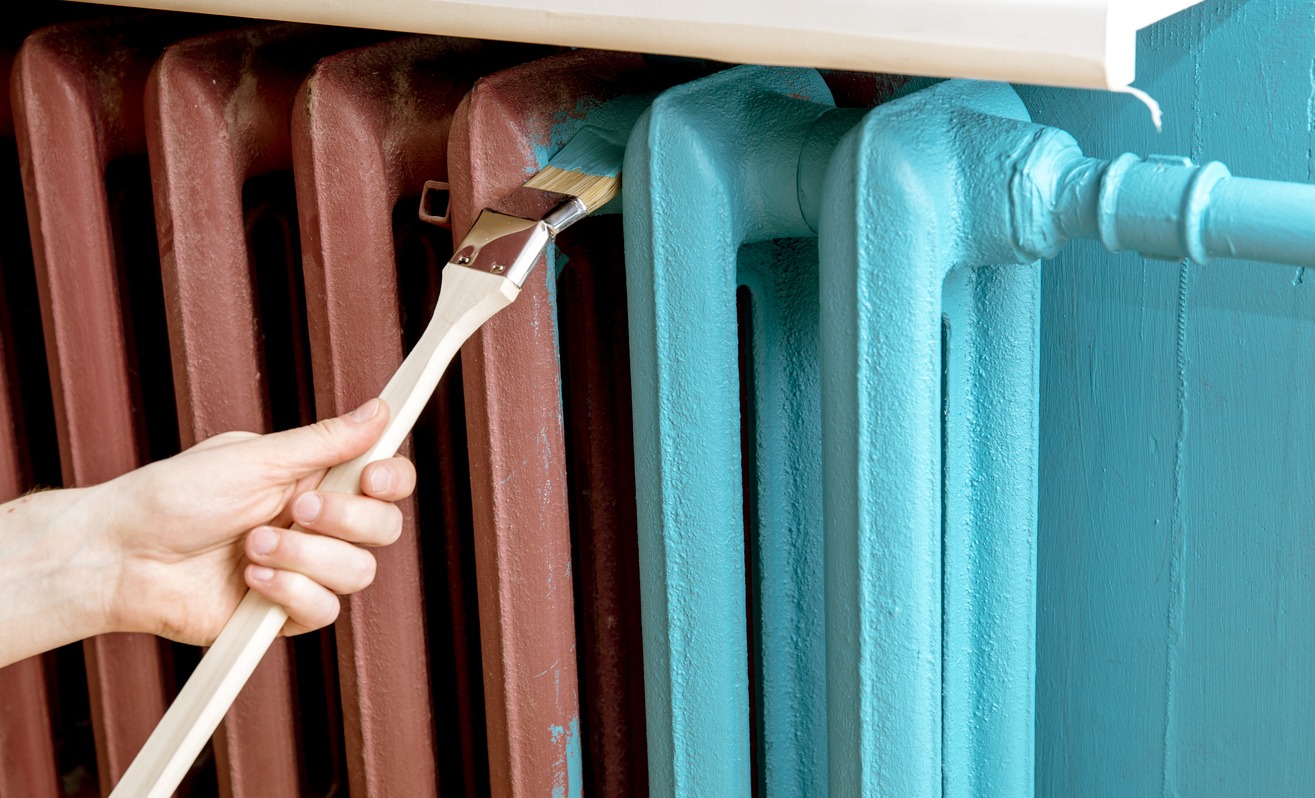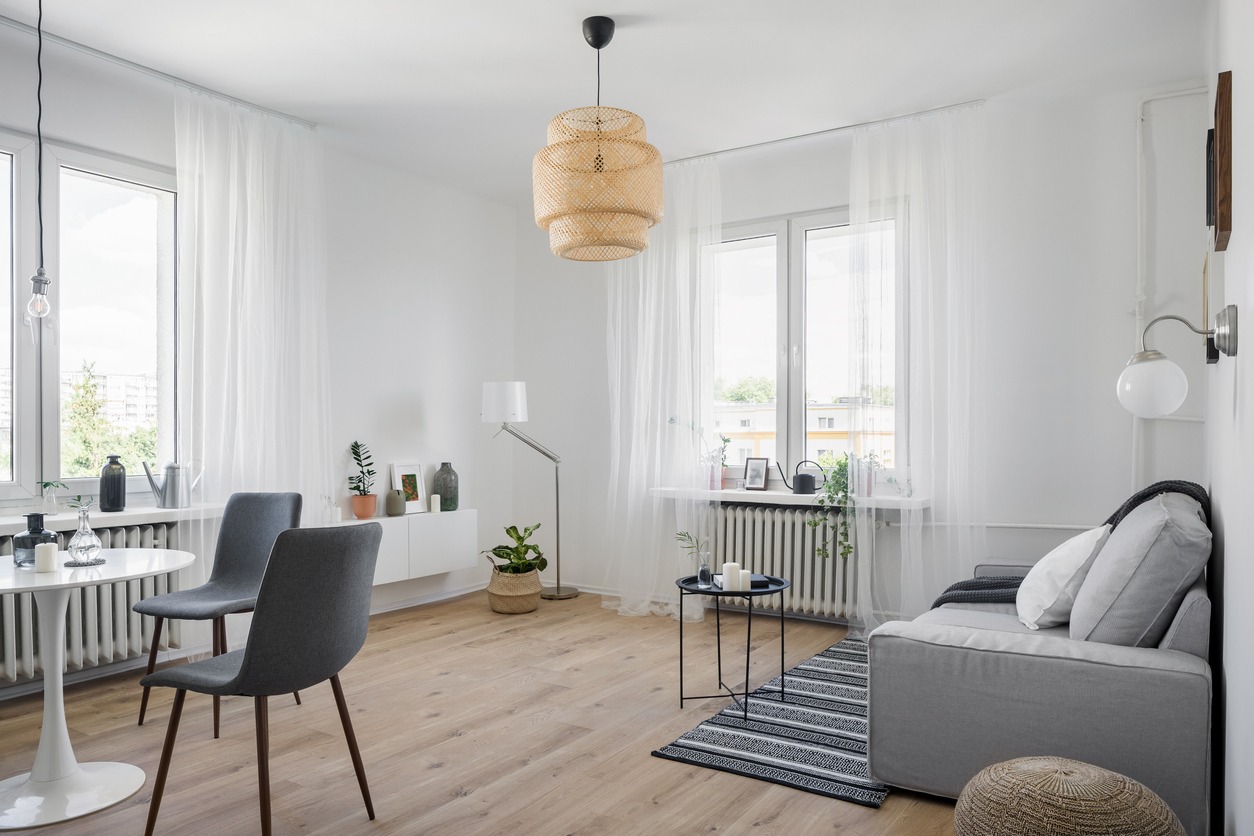Radiators are useful, especially during the fall and winter or in cold regions, as they keep the occupants warm and comfortable. That said, they’re somewhat of an annoying sight. But there are many ways to make your radiator less of an eyesore.
Radiators, whether modern or vintage, can serve as striking aesthetic focal points in a room, adding charm and style beyond their functional role. A common question homeowners and businesses face is whether it’s safe to paint radiators and how to do it correctly.
The answer is yes—when done correctly, painting a radiator can be safe and enhance its visual appeal. Proper preparation, materials, and techniques can help you transform your radiator into eye-catching elements without compromising its performance.
Is it safe to paint a radiator?
Yes, it is safe to paint a radiator with proper preparation:
- Proper preparation: Painting a radiator is safe if the correct materials and techniques are used. Start by cleaning and sanding the surface to remove rust and old paint, ensuring a smooth surface for the new coat.
- Temperature considerations: Radiators heat up, choose paint designed to withstand high temperatures, such as heat-resistant or radiator paint. Standard paint may not endure the heat and could fail over time.
- Health and safety: Using non-heat-resistant paint can lead to peeling, off-gassing harmful fumes, or even fire hazards. To avoid these risks, ensure the paint is designed for high-heat applications and allow proper ventilation during painting.
Choosing the right paint for radiators
Besides proper preparation, choosing the correct paints for radiators is crucial due to the high temperatures involved.
Heat-resistant paint
Radiators operate at high temperatures, so using a paint specifically designed to handle this heat is essential. Heat-resistant paints withstand temperatures up to 200°C (400°F) without deteriorating. It is crucial because regular paints can deteriorate, leading to peeling, bubbling, or even emitting toxic fumes when exposed to such heat.
Types of Paint
- Radiator enamel: This paint is specially designed for radiators. It provides a smooth, durable finish that can handle the heat and frequent handling. Radiator enamel is usually available in various finishes, including gloss and satin, and it often comes in aerosol form for easy application.
- High-temperature spray paint: Ideal for radiators, high-temperature spray paints offer an even coating with minimal brush strokes. It can be useful for getting into all the nooks and crannies of the radiator. Ensure the spray paint is rated for high temperatures to avoid any issues.
- Oil-based paint: Oil-based paints are another option. They are durable and resistant to heat, making them suitable for radiators. However, oil-based paints can have strong fumes during application, so adequate ventilation is necessary. They also tend to take longer to dry compared to other types of paint.
Paints to avoid
- Standard latex paints: These are not suitable for radiators because they can’t handle the heat. When exposed to high temperatures, latex paints are prone to chipping, bubbling, and peeling.
- Acrylic paints: Similar to latex paints, acrylic paints are not designed for high-temperature environments and will likely degrade over time when used on radiators.
Choosing the right paint and applying it properly ensures that your radiator looks good and maintains its functionality over time.
Steps for safely painting a radiator
While you may want to hire a professional for the job, painting a radiator is a task you can complete yourself with suitable materials and application techniques. Make sure you’ve done the correct surface prep work before painting.
- Step 1: Turn off the radiator – Ensure the radiator is turned off and completely cool. Doing so prevents any burns or accidents while painting and helps the paint adhere better.
- Step 2: Clean the radiator – Thoroughly clean the radiator to remove dust, grime, and old paint. Use a mild detergent and water, and make sure the surface is dry before proceeding.
- Step 3: Sand the surface – Lightly sand the radiator with fine-grit sandpaper to create a rough surface for better paint adhesion. This step helps the primer and paint bond properly.
- Step 4: Apply a metal primer – Apply a metal primer to the radiator to prevent rust and improve paint adhesion. Use a primer specifically designed for metal surfaces. Let it dry completely as per the manufacturer’s instructions.
- Step 5: Apply the paint – For a smooth finish, use a brush with long, thin bristles to reach all the nooks and crannies. A radiator roller can also be useful for larger flat areas. Apply the paint in thin, even coats, allowing each coat to dry before applying the next. Be sure to use heat-resistant paint designed for radiators.
- Step 6: Allow ample drying time—Wait at least 24 hours for the paint to fully dry before turning the radiator back on. This ensures the paint cures properly and prevents any potential fumes or damage from the heat.
Following these steps helps you achieve a durable and professional-looking finish on your radiator.
Common mistakes to avoid when painting radiators
Consider the following guide to avoid common mistakes when painting radiators:
- Using non-heat-resistant paint: Ensure you use paint specifically designed for high temperatures. Non-heat-resistant paints can peel or blister when exposed to the radiator’s heat.
- Painting while the radiator is on: Always turn off the radiator and allow it to cool completely before painting. Painting a hot radiator can cause the paint to dry unevenly or fail to adhere correctly.
- Skipping primer: Use a suitable primer, such as a metal primer, to help the paint adhere better and to prevent rust. Primer also ensures a smoother finish and longer-lasting results.
- Applying too many layers: Applying too many coats can cause drips and uneven texture. Follow the manufacturer’s recommendations for the number of coats and ensure each layer is thin and even.
Aesthetic considerations
Consider the following ways to make your radiator look aesthetic:
1. Matching your room’s design:
- Blending with the wall color: Painting the radiator the same color as your wall can create a seamless look, making it less noticeable and blending it into the room’s overall design. This approach works well for a minimalist or cohesive aesthetic.
2. Accent colors:
- Bold colors: Using a contrasting color for the radiator can turn it into a design feature, drawing attention and adding a pop of color. It can be particularly striking in neutral or monochromatic rooms.
- Metallic finishes: Gold, silver, or bronze finish can give the radiator a sophisticated or industrial look, enhancing the room’s decor by adding a touch of luxury or modernity.
3. Finish options:
- Glossy finish: Reflective and eye-catching, a glossy finish can make the radiator stand out more and is easier to clean. However, it may highlight imperfections and might not suit all design styles.
- Matte finish: This finish provides a more subtle look and can help the radiator blend into the wall color. It’s less reflective, which can give a softer appearance, and is better at hiding imperfections.
Each choice impacts how the radiator interacts with the rest of the room, so consider your room’s overall design and your personal style preferences.
Professional vs. DIY: Should you hire a painter?
Painting a radiator is a job that any DIY home improvement enthusiast can complete. That said, hiring a professional to do the job also has advantages.
Complexity of the task
- DIY: Painting a radiator requires knowledge of painting metal surfaces and using high-temperature paint that can withstand the heat. The task can be challenging if you’re not familiar with these aspects.
- Professional: Professionals are experienced with these nuances and can more effectively handle specific requirements, ensuring a smooth, long-lasting finish.
Professional tools and techniques
- DIY: You would use brushes or rollers suitable for metal surfaces. Professionals often use sprayers for an even coat and have access to high-quality paints and primers.
- Professional: They use specialized tools like sprayers for an even application and adhere to safety standards for handling paints, especially those suited for high temperatures.
DIY tips:
- Materials needed: Metal primer, high-temperature paint, paintbrushes or rollers, painter’s tape, drop cloths.
- Safety precautions: Ensure the radiator is turned off and completely cool. Provide good ventilation for the space, use protective gear (gloves, mask), and follow the paint manufacturer’s instructions carefully.
- Instructions:
- Preparation: Clean the radiator thoroughly to remove dust and grease. Sand any rust spots and apply a metal primer.
- Painting: Apply a high-temperature paint designed for radiators. Use long, even strokes to avoid drips and ensure complete coverage.
- Drying: Allow the paint to dry completely before turning the radiator back on to avoid fumes and ensure a proper cure.
Hiring a professional can ensure a flawless finish and avoid potential issues, while a DIY approach can be more cost-effective if you’re confident in your skills.
Maintenance tips for painted radiators
- Regular cleaning: To clean painted radiators, use a soft cloth or sponge with a mild detergent and water. Avoid abrasive cleaners or scrubbers that could damage the paint.
- Avoid chips and scratches: Use radiator covers or carefully move objects near radiators to prevent accidental damage. Touch up small chips or scratches with matching paint as soon as possible.
- Repainting: Radiators typically need repainting every 5-7 years, depending on wear and tear. To touch up or refresh the paint, lightly sand the area, clean thoroughly, and apply a new coat of radiator paint.
Parting words
Painting a radiator can provide safety and aesthetic benefits as long as you prepare its surface correctly and use the best paints. A newly painted radiator can help prevent rust and improve heat distribution. It can also help enhance a room’s design and update its appearance.
If you’re uncertain about painting your radiators or want a finish that will last, consult a professional painting company. For expert help and high-quality results, contact Custom Painting, Inc. at 925-294-8062 or message us on our contact page for your radiator and other painting projects.




